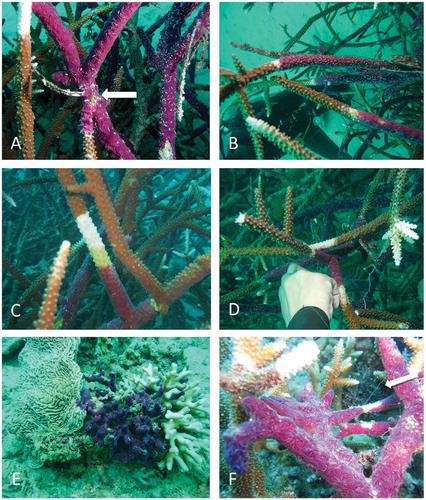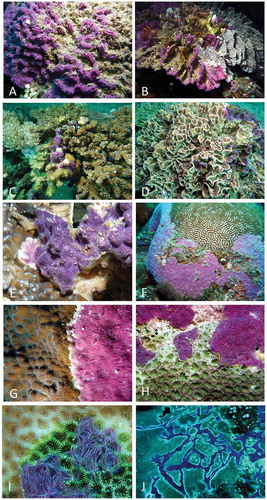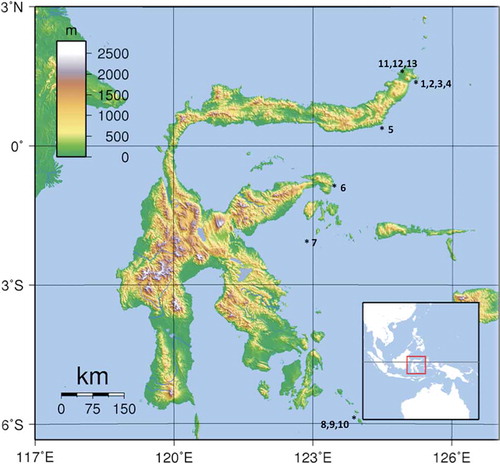Figures & data
Table I. Areas and dive sites where Chalinula nematifera was recorded associated with hard corals.
Figure 2. Chalinula nematifera from Bangka Island: A–C, Acropora necrosis (white band) in the area in contact with the sponge; arrow in (A) points the starting point where the plastic wire was tied to measure sponge growth; D, white area of dead Acropora on a branch in contact with a covered colony; E, sponge invading the encrusting coral Pachyseris sp. and Seriatopora sp.; F, filaments of mucus (arrow) produced by the sponge.

Figure 3. Chalinula nematifera overgrowing hard corals: A, unidentified species; B, Pectinia sp.; C, Pocillopora sp.; D, Pectinia sp.; E, Mycedium elephantothus; F, Platygyra daedalea; G, Echinopora sp.; H, Favia sp.; I, Goniastrea sp.; J, Faviidae. Note particularly in (H–J) the white areas of necrosis, and the sponge spreading out over living portions of coral in (C–E).


